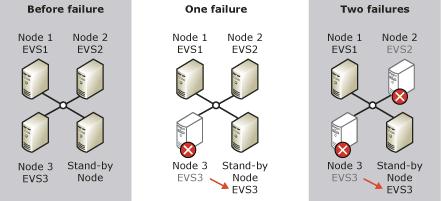
What are the differences in the given cluster options in using Exchange 2003 server? Which is best to use and why? Please send me some advice on choosing. Thanks.
Cluster Options in using Exchange 2003 Server

Hi Chloe,
Before we proceed to your first question, we need to identify first if your Server is compatible in Clustering you want to make for Exchange Server 2003. Here are the factors you should point out first before Clustering;
1. Determining the expected level of availability for end user.
2. Configure Hardware with accordance to Exchange 2003 cluster specification.
a. Cluster Environment compatible.
b. A certified hardware must be complete before proceeding to Cluster Solution.
c. Application for Clustering should be installed.
d. Technical Support for 24/7.
e. Ensure High Availability infrastructure support. E. g Networking Equipment, USV support etc.
f. Defined SLAs (Service Level Agreement).
If you identify the specific requirement above, you can precede Clustering any time. To answer your Queries, here are the points you need to know before proceeding to your Task;
Active/Passive clustering:
Is most recommended cluster configuration for Exchange 2003.
-
It can host eight nodes as maximum EVS’s. Note that each node runs as EVS.
-
It has one or more passive nodes.
-
Remain on Standby until failure occurs when configure to EVS and installed passive node in Exchange Server. For example, when one EVS failed or offline a passive node cluster take effect in the failed node. As a result, the cluster in Exchange server will be unavailable in brief period of time.
-
See f igure for Failure Effect on Active/ Passive Cluster.

-
As illustrated the configuration can hold a single node failure. This is better than to other Clustering Operation.
Active/Active Clustering:
Is the vice versa of first Clustering Procedure, it is discouraged cluster configuration for Exchange 2003.
-
Limited to two nodes.
-
If you require two nodes in your Clustering one node must be passive.
-
Exchange 2003 will not create EVS if your option requires adding a node in an two node active/ active cluster.
-
See figure failure effect on Active/ Active Cluster.

-
After installing the third node, EVS will not be able to run in a single cluster node.
Conclusion;
It is strongly recommended to use Active / Passive Clustering than Active/ Active Clustering as per comparison above.
Best Regards.
A.Wright















